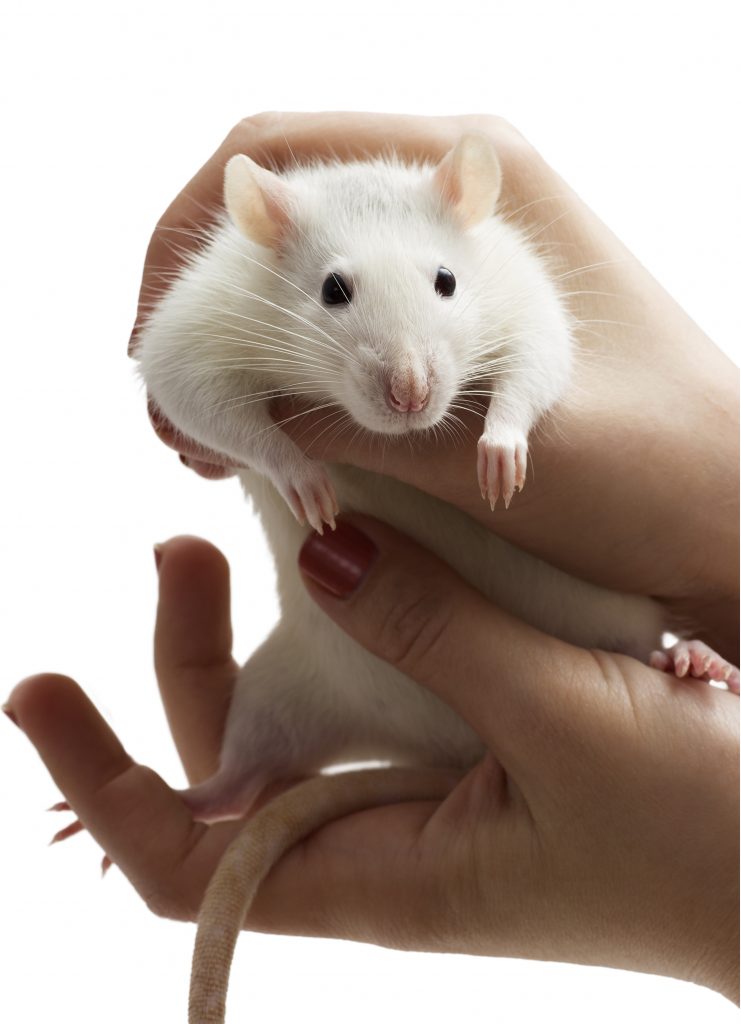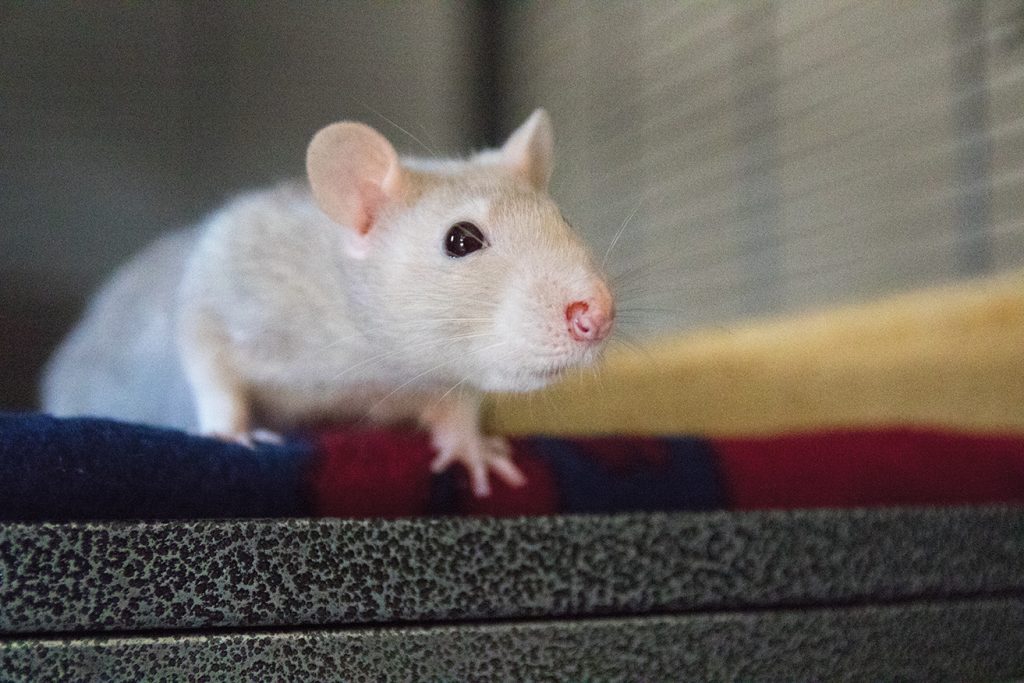The term “respiratory” relates to the areas involved when you breathe, this includes the nasal cavity right the way down through to the lungs. Upper and lower respiratory disease is very common in rats and today’s article will look at a few of the things to watch out for.

What causes respiratory disease?
The cause usually relates to a combination of factors; often there is a bacterial, viral and/or Mycoplasmal infection present that is worsened by additional stress or a dirty environment. Mycoplasma pulmonis is one of the main organisms present in almost all chronic respiratory disease in rats. It can be transferred via aerosolisation (when rats breathe or sneeze on each other) or sometimes from the female rat to her babies. Mycoplasma can be a normal inhabitant of the respiratory tract, however if your rat becomes stressed or exposed to another respiratory disease, this can trigger Mycoplasma to cause disease. Other bacteria and viruses that can be a component of respiratory disease are usually transferred by aerosolisation.
The environment that your rat lives in can also play a factor, as ammonia (a component of urine and faeces) building up in a rat’s environment can destroy cilia inside their respiratory tract. Cilia are small projections extending off the cells that line the respiratory tract which are covered with mucous. The mucous traps any dust, dirt or bacteria trying to enter the respiratory tract and the cilia move it back out of the respiratory tract. Ammonia can destroy these cilia which then allows bacteria to enter the respiratory tract. For this reason, well-ventilated cages are recommended. We also recommend regular and thorough cleaning of rat cages and even litter training your rats.
What are the signs of respiratory disease?
Respiratory disease can present with a number of signs including sneezing, wheezing, nasal discharge, having ‘red tears’ and unusual noises while breathing, including rattling or honking.

How do we treat respiratory disease?
Treatment of respiratory disease is often aimed at control rather than a cure. Unfortunately in rats when respiratory disease occurs it is often present for life. Respiratory signs can clear up with the right treatment, however in many cases they will recur, as the organisms causing the infection can be very difficult to eliminate from the respiratory tract.
We use a combination of medications in order to achieve the best relief for rats. These include:
Antibiotics
Antibiotics are used to control secondary bacterial infections. Some antibiotics that are prescribed for respiratory infections can also have anti-inflammatory effects, which will further help relieve symptoms.
Anti-inflammatories
Anti-inflammatory drugs are used to control any inflammation that may be occurring in your rat’s airway.
Bronchodilators and Mucolytics
Bronchodilators dilate the airways within your rat’s lungs and mucolytics help to break down any excessive mucous that has formed. Ultimately this allows more air to flow through and helps rats who are having difficulty breathing to be able to breathe better.
Nebulisation
Using a specialised nebuliser which turns medications into a vapour, medications can be directly delivered to the airways. Nebulisation can also be used to help remove mucous that can build up in airways during chronic respiratory infections.
Should I treat all of my rats?
This depends on a number of factors, including how many rats you own, how many of these rats are showing clinical signs and how old your rats are. The answer is different for different scenarios, so speak to your vet about your situation and they can give you a more personalised treatment plan.
What else can I do to help my rat?
Give them lots of love! Your rat will benefit from some extra TLC, including lots of warm bedding such as polar fleece, warm food and plenty of water. If your rat lives outside, consider bringing it inside, especially during the cold winter months, as cold weather can exacerbate respiratory disease. If your house is cold, cover their cage with a blanket to reduce draughts and consider providing them with a heat pack, but bear in mind that rats like to nibble! If you are using sawdust as a substrate in your rat’s cage try switching to something less dusty, such as shredded paper, which is less likely to irritate your rat’s airway.
Article written by Dr James Haberfield from The Unusual Pet Vets

